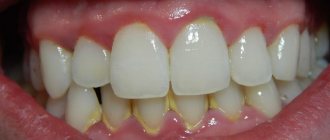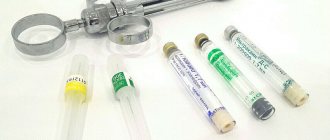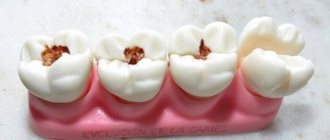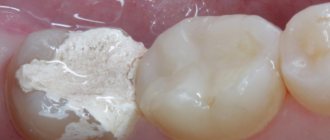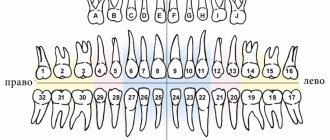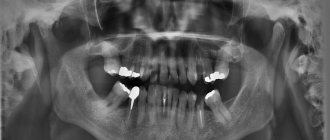In dentistry, eights firmly hold the status of the most problematic teeth. The list of adverse consequences that their owners have to face is very extensive.
Possible complications
Often third molars grow unevenly, damaging the tissues of the oral cavity. Improper growth is accompanied by pain, aggravated by chewing, and bleeding gums. Pain may also occur, radiating to the jaw, ear, and temple. If you experience such symptoms, do not hesitate to visit your dentist.
After the examination, he will decide whether to remove the discomforting figure eight. To the question: “How long does it take to remove a wisdom tooth?” It is impossible to answer unambiguously. In simple cases, the manipulation takes 20 minutes, in difficult cases – from one to two hours. Its duration depends on the surgical strategy, which is determined individually depending on the clinical picture.
Indications for removal
If the extreme molars are formed correctly, then they are no different from other teeth. They can be affected by caries, which turns into pulpitis, periodontitis and other diseases. The dentist decides whether to remove a wisdom tooth after a detailed examination of the x-ray. It shows the location, quantity, structure of roots, carious cavities, condition of the canals, direction of growth, neoplasms and other pathologies.
The tooth is removed if there is:
- advanced form of caries with complications: pulpitis, cysts, complex, tangled canals that cannot be properly cleaned and sealed;
- neurological pain, constant inflammation of tissues during teething, partially erupted teeth (pericoronitis);
- strong pressure on neighboring molars, pathological changes in bite;
- incorrect position of the teeth, which leads to injury to the mucous membranes.
Carious lesions and inflammation on figure eights occur quite often due to the difficulty of access for hygiene procedures. If caries is not cured in a timely manner, it will spread to neighboring teeth, since they are located very close to each other.
During the growth of the last molars, branches of the trigeminal nerve tissue may become inflamed. In this case, not only the jaw hurts, but also the head. If the problem cannot be eliminated by therapy, then removal is performed.
When there is little space on the jaw, an overgrown wisdom tooth can put a lot of pressure on neighboring dental units, causing constant pain and changing the correct bite. For the same reason, they can grow crookedly, cut into the gums from the side and injure the mucous membranes of the cheeks.
The third molar takes a long time and painfully to erupt. Bacteria penetrate into the slightly open gum tubercle, food particles enter, causing an inflammatory process. The soft tissues become inflamed, causing pain that radiates to the ear and temple. Under the “hood” a favorable environment is created for the development of bacteria, so inflammation develops quickly and purulent contents appear. This position can lead to melting of bone tissue and other complications, so the dental unit is removed and anti-inflammatory therapy is carried out.
Often a cyst forms on wisdom teeth. The disease is asymptomatic and is detected only during instrumental examination of the jaw. If it is not removed, it can subsequently become a source of severe inflammation, osteomyelitis.
When is it necessary to remove a tooth?
Indications for surgical tooth extraction are divided into emergency and planned.
Urgent:
- Inflammation of the acute stage in the soft and hard structures of the maxillofacial area (phlegmon, abscess, etc.);
- traumatic fracture of the coronal part;
- formation of cystic formation or swelling;
- the disturbing unit presses on the nerve and causes complications.
Planned:
- destruction of the crown of more than ¾ of the total volume, due to an extensive carious process, which cannot be restored;
- advanced form of periodontitis, in which 3rd and 4th degrees of tooth mobility are formed;
- orthodontic indications, when there is not enough space for units in the dentition (high crowding);
- non-anatomical location of the third molar, which interferes with opening the mouth - removal of an impacted tooth cannot be avoided;
- superset (location of the rudiments of dental units in excess of the physiological norm).
How is the operation performed?
Before removal, the dentist examines the patient’s oral cavity and takes an x-ray. After diagnosis, he selects a surgical procedure and explains to the patient why it is necessary to remove the wisdom tooth. Removal can be simple or complex. The second operation is more difficult, as the gums and bones are affected.
Easy removal
It is carried out in the same way as on ordinary teeth. Suitable for removal of the upper eights if there are no serious developmental abnormalities or complications. The dental unit is removed with forceps, without the use of other instruments. The operation is low-traumatic and takes from 10 to 30 minutes.
Step-by-step removal of the 8th tooth:
- anesthesia;
- extraction from the hole;
- removal of fragments if the tooth is crumbled;
- treating the wound with an anesthetic.
After the operation, the doctor gives the patient recommendations for oral care over the next few days. If necessary, prescribes medications for pain and to prevent wound infection.
Difficult removal
It is carried out on the lower molars or on the upper ones, if the coronal part is practically destroyed, there are pathologies in the roots, in case of developmental anomalies, complications. The surgeon can use a scalpel, drill and other surgical instruments. Before the procedure, the patient must tell the doctor about the presence of diseases or allergies to medications to exclude contraindications. How long it takes to remove a wisdom tooth depends on the clinical picture. The duration of surgical procedures is from half an hour to two hours.
Operation stages:
- pain relief with local anesthetics;
- antiseptic surface treatment;
- cutting and detachment of a flap of gingival tissue;
- drilling the bone, extracting a dental unit;
- treatment of the wound with drugs;
- suturing.
After the procedure, the surgeon advises the patient about precautions during the postoperative period and prescribes antibacterial and painkillers. It is necessary to visit the doctor again to examine the wound.
How long does pulp removal take?
On average, it takes about 40-50 minutes for pain relief, nerve removal, and root canal treatment. If the doctor administers high-quality anesthesia, it will take effect almost immediately, and the patient will not feel pain throughout the entire process. If the effect of anesthesia weakens during depulpation, an additional injection is given.
Reference! Before administering an injection with anesthesia, the doctor treats the soft tissue with a special freezing agent. That is, the patient will not experience pain either when inserting a needle into the tissue or during the process of removing the dental nerve.
Is it painful to remove a wisdom tooth?
Most people are afraid of pain during surgery, not post-operative complications. Removal is usually performed under local anesthesia, which “freezes” the tissue. It is sufficient for painless surgical treatment. Modern clinics use the drugs Ultracain or Septanest, which provide a freezing effect within a few minutes after injection into the gums.
If the patient experiences severe fear or the operation is complex and time-consuming, then general anesthesia is performed. Anesthesia completely turns off the patient’s consciousness, so he does not feel anything and does not remember about the procedure. Treatment under anesthesia is carried out in the presence of an anesthesiologist, who determines the dose and monitors the patient’s condition at the time of surgery.
What is pulp and does it need to be removed?
The pulp, or dental nerve, is the connective tissue that fills the tooth cavity. It consists of fibers, nerve endings, lymphatic and blood vessels. The dental nerve supplies bone tissue with nutrients, is responsible for the proper development of the tooth and protects it from infection.
If the pulp is damaged, an inflammatory process begins, and the person experiences severe pain. After removal of the nerve, the tooth becomes “dead,” but with professional manipulation by a doctor, it fully retains its functions.
Consequences of wisdom tooth removal
Complications may occur during or after surgery. During removal, the adjacent tooth, gums and nearby tissues may be damaged, the alveolar process may break, and the maxillary sinus may perforate. Such consequences arise due to the inexperience of the doctor or time constraints when the surgeon performs the operation quickly due to a large queue of patients. In order to avoid complications, you need to choose a reliable clinic where the patient can devote enough time.
After the tooth has been successfully removed, the patient still faces difficulties. The main ones are pain and swelling, but they go away after a few days. Severe pain can be reduced with analgesics. Antibiotics are prescribed for wisdom tooth removal if there is an inflammatory process.
Common complications include:
- bleeding from the socket;
- hematoma;
- alveolitis - inflammation of the socket;
- increased body temperature;
- loss of sensitivity (paresthesia) in nearby areas - cheeks, gums, chin.
Many patients rinse their mouth thoroughly after surgery, but this should not be done. A blood clot forms on the hole, which protects the wound surface from infection. If it is washed out, a dry socket effect occurs, which leads to tissue infection. Alveolitis requires surgical intervention.
What is the difference between removing top and bottom eights?
Removing a tooth in the lower jaw is more difficult. The reason lies in the greater density of the alveolar process and the branching of the roots. When removing lower third molars, the risk of breaking off a root fragment increases, so the operation has certain specifics. To completely eliminate pain, conduction anesthesia is used here. In this case, the nerve through which the pain signal is transmitted is blocked for a long time. In the upper jaw, infiltration anesthesia, the so-called “freezing,” copes with the task of effective pain relief.
Tooth extraction: painful or not?
The popular idea of discomfort during the removal of a “wise” tooth is nothing more than a myth. Even the most complex dental operations are performed without the slightest pain, and painless removal of the third molar has long become the standard of an ordinary clinic.
The latest generation carpule anesthetics leave no chance for pain. The needle of a carpule syringe is thinner, so its insertion into the tissues of the oral cavity is almost not felt. To relieve sensitivity of the gums at the injection site, it is first lubricated with an anesthetic gel.
Particularly susceptible people experience psychological discomfort from the sounds of rocking a tooth with forceps. To eliminate stress, dentists use sedatives. Extraction with sedation allows the patient to relax in the dentist's chair and relieves anxiety.
Recovery period
After the procedure, it is not recommended to consume hot food or drinks. Do not rinse your mouth for 24 hours to prevent a blood clot from accidentally falling out. It is not recommended to smoke for at least two days. Nicotine constricts blood vessels, which prevents the wound from healing. Do not overheat or apply a heating pad to your jaw, as this may cause bleeding.
To relieve pain, you can take an analgesic or apply a cold compress to the cheek in the projection of the sore spot. Solid foods should be chewed on the side of the jaw that has not been operated on.
If there are no complications, then after a few days the wound will heal and the restrictions can be lifted.
Techniques
In addition to the classical methods of extirpation, dentistry practices gentle interventions that allow preserving part of the root for subsequent prosthetics:
- amputation
_ Excision with preservation of the crown is performed in the presence of a granuloma/cyst; - hemisection
. It consists of dividing the root into 2 segments, the root with the source of infection at the apex is removed, the remaining root is covered with a crown; - cystectomy
. The procedure is indicated to remove the cyst and preserve the integrity of the unit. The dentist removes the tumor, makes a hole in the alveolus, curettage, treatment and suturing of the wound. The method is more often used in conjunction with resection - removal of the root apex along with the source of inflammation.
Root removal steps
- The doctor examines the oral cavity, assesses the condition of the teeth and mucous membranes. Conducts diagnostics and takes x-rays.
- We use only high-quality anesthetics for pain relief. Our doctors make sure that all medical procedures are carried out without causing discomfort to the patient.
- If necessary, the surgeon carefully separates a section of gum tissue. The root is divided into several fragments and extracted in parts. In cases where the root cannot be extracted using forceps, the dentist removes them with an elevator (straight or angular), which is inserted between the wall of the hole and the root. If the roots of a molar or wisdom tooth are subject to extraction, the doctor separates them from each other with a drill, and then removes the parts with special tools.
- After removing the rotten root, the hole is washed. A tampon with medicine is applied to it for a few minutes, after which it is closed with sutures.
- A repeat x-ray is taken to make sure there are no debris left in the gum.
Caring for the mucosa after root resection
After the procedure for removing dental roots, the patient faces a certain period of rehabilitation, during which the mucous membrane heals, blood vessels return to normal, and microtraumas disappear.
Postoperative care rules:
• open wounds are treated with an antiseptic and anti-inflammatory agents;
• rinsing and washing are carried out daily;
• for pain, analgesics are taken;
• sometimes the doctor prescribes antibiotics to relieve inflammation and prevent infection.
Important. Treatment in the postoperative period can only be prescribed by a doctor. Any actions in excess or contrary to prescribed therapy may lead to complications and the need for repeated intervention.
What not to do in the first days and hours after removal:
• eat and drink – 2 hours;
• eat too hot or hard foods – 1 day;
• touch the hole with your tongue or hands;
• go to the gym, saunas, baths.
You should avoid any activities that may dilate blood vessels or increase blood pressure. If acute, painful pain occurs, you should immediately consult a doctor.
Removal cost
The final cost of removing root elements from the oral cavity is influenced by the complexity of the operation, the chosen extraction technique and the price of the materials used. Therefore, it is possible to make a final calculation of the cost of treatment only after examination and consultation with a doctor.
What to do if a tooth is cracked
In this case, you need to urgently make an appointment with a dentist. A timely visit to an experienced dentist will increase the chances of saving a cracked tooth and reduce the cost of treatment. Please follow these guidelines before visiting the dental clinic.
- Do not probe the crack with your tongue or touch the tooth with your hands.
- Avoid chewing load on the injured crown.
- Every hour, rinse your mouth with an antiseptic, a decoction of medicinal herbs (chamomile, sage) or a weak saline solution (0.5 tsp per glass of water at room temperature).
These measures will prevent the crack from enlarging and the introduction of infection into the tooth pulp.
Removal of a root with a cyst
Extraction of the root part with a cyst-like formation is carried out exclusively by surgical method. Depending on the nature and complexity of the problem, the doctor removes the tooth root completely or partially, cutting out only the cyst and the damaged root tip. In the latter case, after the procedure, the patient is prescribed additional treatment using antibacterial and antiseptic drugs.
Methods for removing the roots of teeth with a cyst:
• hemisection – removal of the affected tooth and cyst;
• cystectomy – removal of the formation and root tip;
• cystomy – extraction of the anterior part of the cyst;
• laser removal – removal of the tumor.
Each of these methods has its own characteristics and nuances.
Cystomy and cystectomy require quite a long postoperative treatment, but preserve the root. Hemisection is carried out quickly and allows you to leave the tooth, but not for long. Having lost part of the support, it loses the ability to cope with serious mechanical loads, as a result of which a prosthesis cannot be installed on it. After laser extraction, tissues heal quite quickly and there are practically no complications, but this procedure is more expensive than all other methods.
In what cases is comprehensive removal necessary?
Complete extraction of dental roots is indicated for complex longitudinal fractures of teeth and their abnormal location. It is necessary in case of detection of such serious inflammatory processes as an abscess, osteomyelitis, periostitis or phlegmon. You cannot do without it in case of hypermobility of the tooth root and damage to the coronal part of the dental element at the level below the gum.
Important. Tooth root extraction is used only if no other technique can be used.
